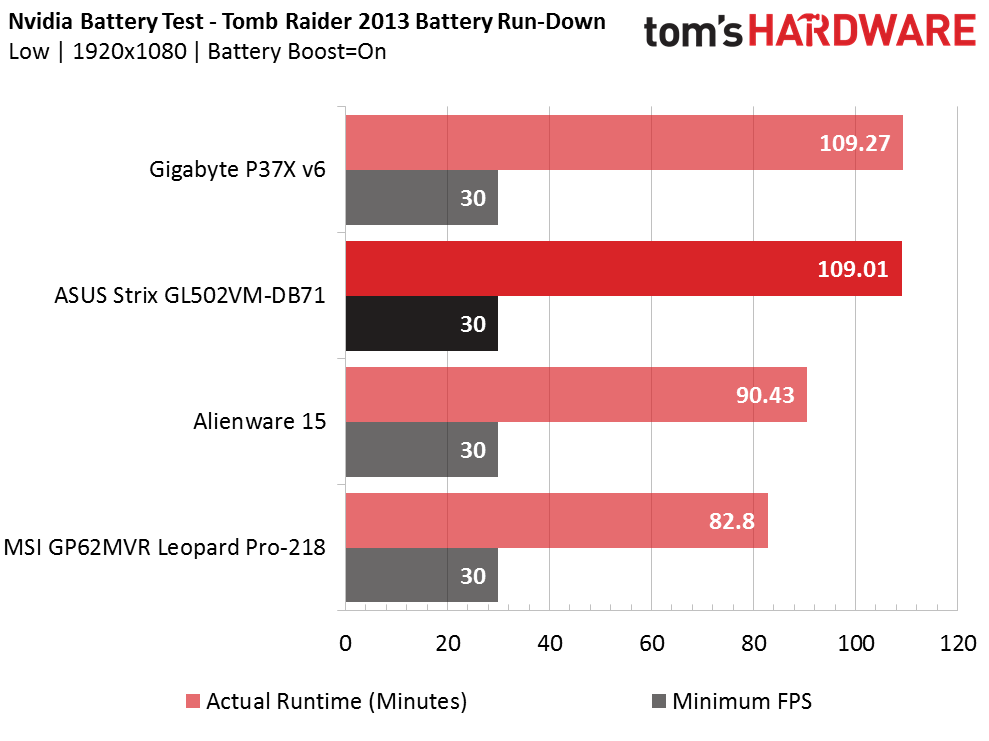Asus Strix GL502VM-DB71 Gaming Laptop Review
Asus packs an Intel Core i7 processor, 16GB of RAM, an Nvidia GeForce GTX 1060 and a G-Sync display into the Strix GL502VM-DB71 for $1,399.
Why you can trust Tom's Hardware
Battery, Thermal And Display Testing
Battery Test - Tomb Raider 2013 Battery Rundown
To test battery life, we set each laptop’s battery profile to Balanced while running Tomb Raider’s built-in benchmark at the lowest detail preset. The frame rate is locked at 30 FPS through GeForce Experience’s Battery Boost to limit the strain on the battery. Meanwhile, a script running in the background monitors and time stamps the system’s battery percentage. The laptops are set to hibernate once battery levels reach 5%.
On battery power, the Strix GL502VM is capable of delivering an outstanding 1 hour and 49 minutes of play time. The two other GTX 1060-equipped models in our tests, the MSI Leopard Pro and Alienware 15, delivered at least 20 fewer minutes of game time, making the Strix an ideal pick if gaming on the go is your heart's desire. At just under two hours long, the Strix will handle short commutes to and from your destination easily.
Thermal Testing
For our thermal testing, we used our Optris PI 640 infrared camera to measure the laptop’s thermals. More information about how we test, be sure to check out our Measurement Science article. We captured a thermal image during idle, and after 15 minutes of a Furmark GPU stress test. During the Furmark test, a temperature log of the GPU diode is recorded using Aida64.
At idle, the Optris detects cool temperatures ranging between 39°C and 42°C. After running Furmark for 15 minutes, the Optris detects between 66°C and 79°C, while Aida64's GPU diode sensor detects 66.1°C on average. The cooling exhibited in the Strix GL502VM is acceptable on the lower end, but the temperatures detected in the CPU and GPU heatsinks run a little too warm. So long as these hot spots don't cross into 80°C and more, you should be fine. Compared to the other three laptops, the Strix is the second coolest system, just below the Alienware 15. The cooling solutions of the Leopard Pro and P37X v6 aren't as robust as that of either the Strix or Alienware laptops.
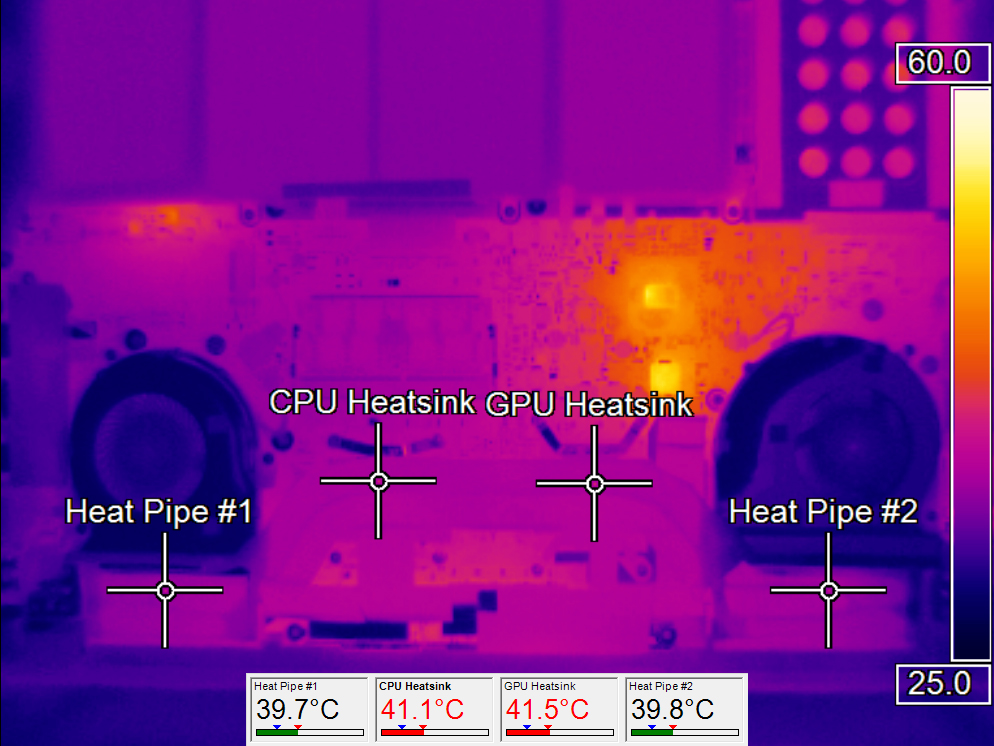
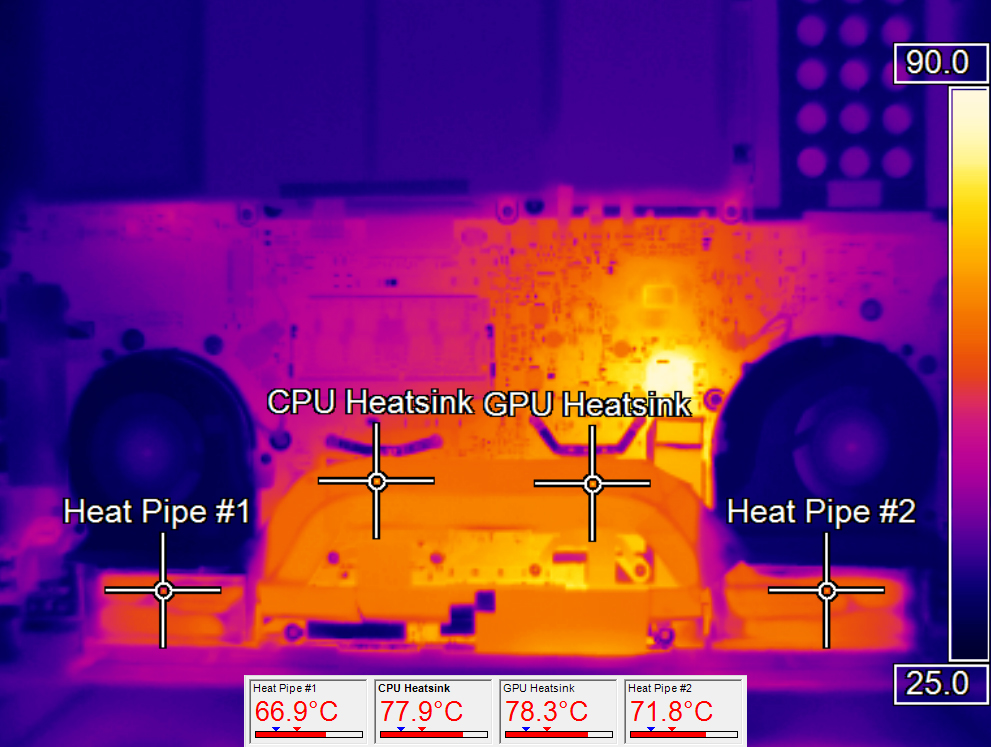
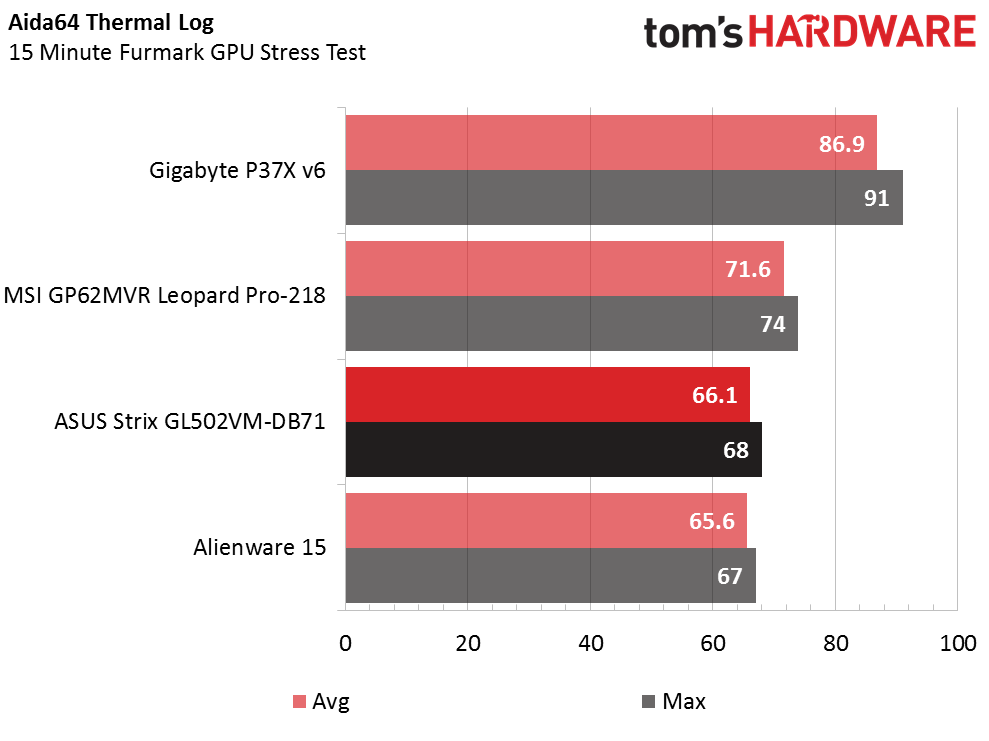
Display Testing
We used the SpectraCal C6 Colorimeter to measure the Leopard Pro's display. Be sure to check out our Display Testing Explained article for a full description of our test methodology.
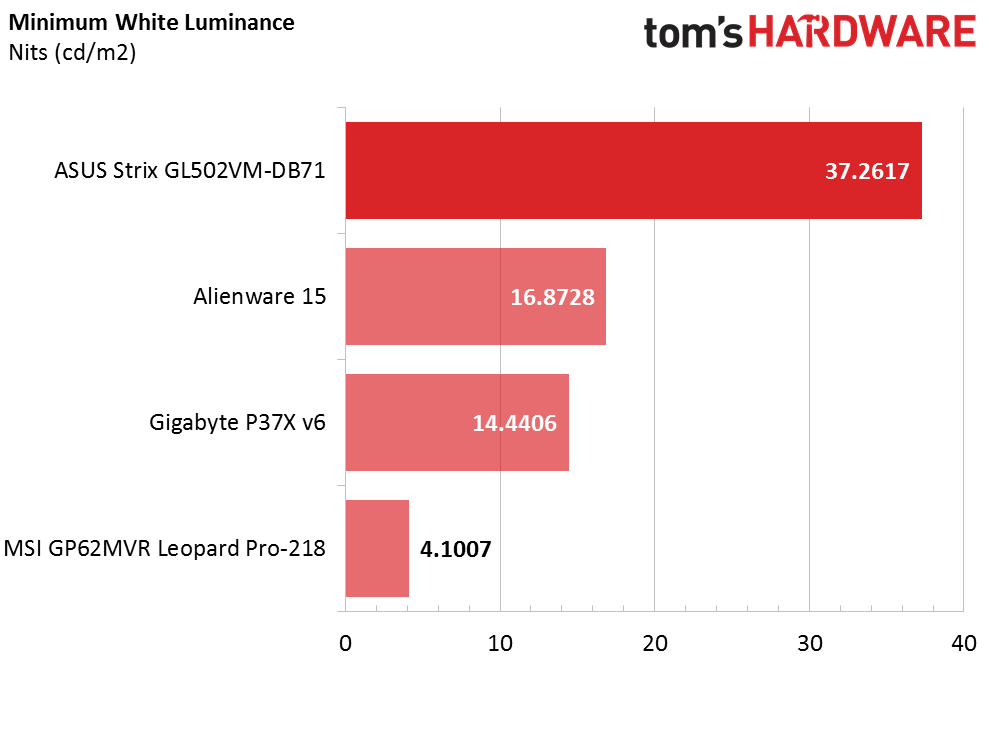
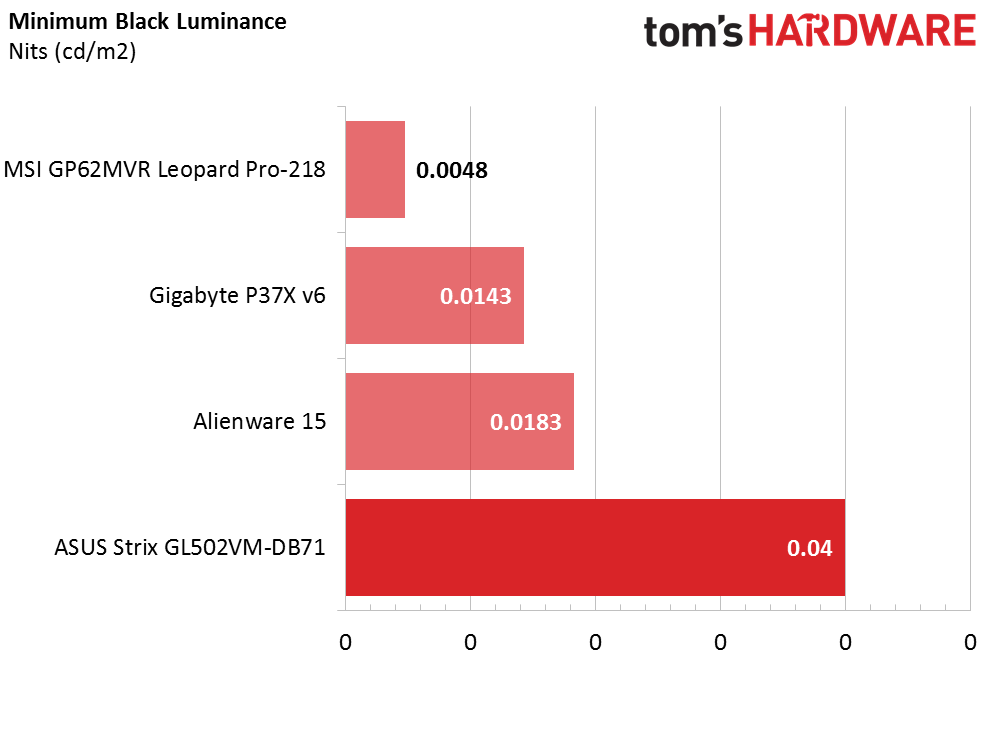
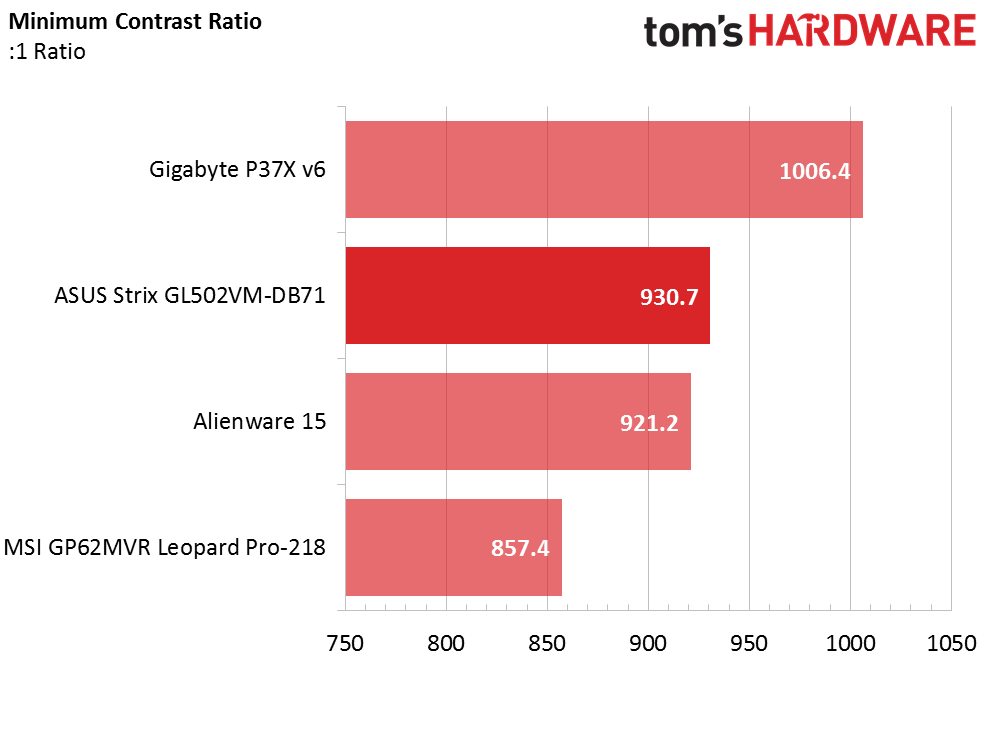
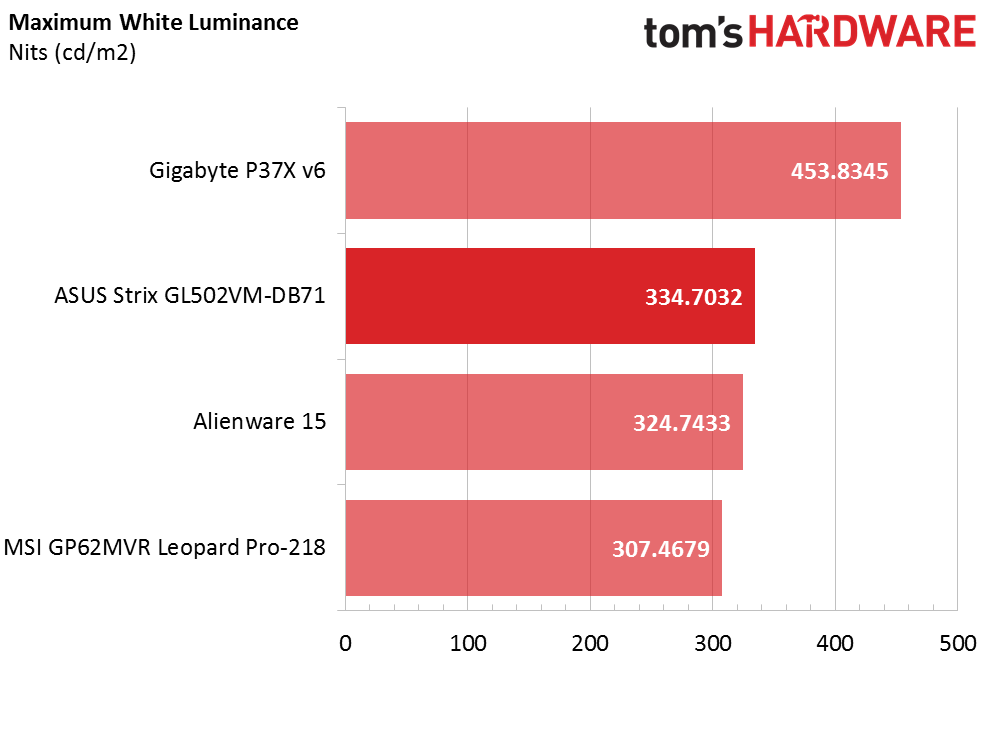
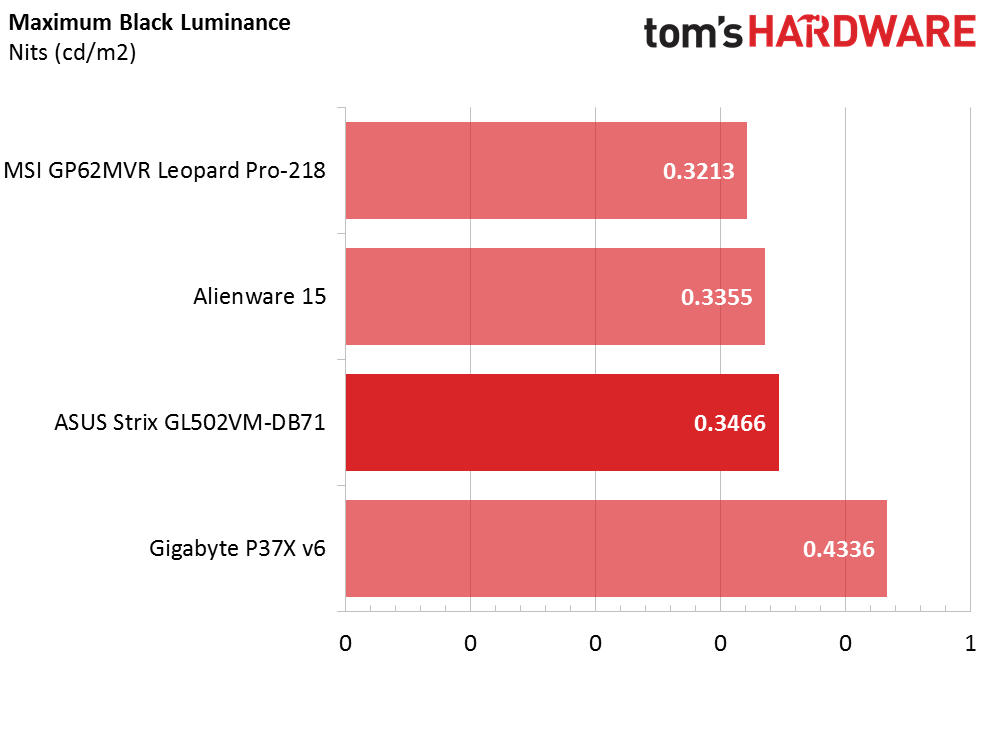
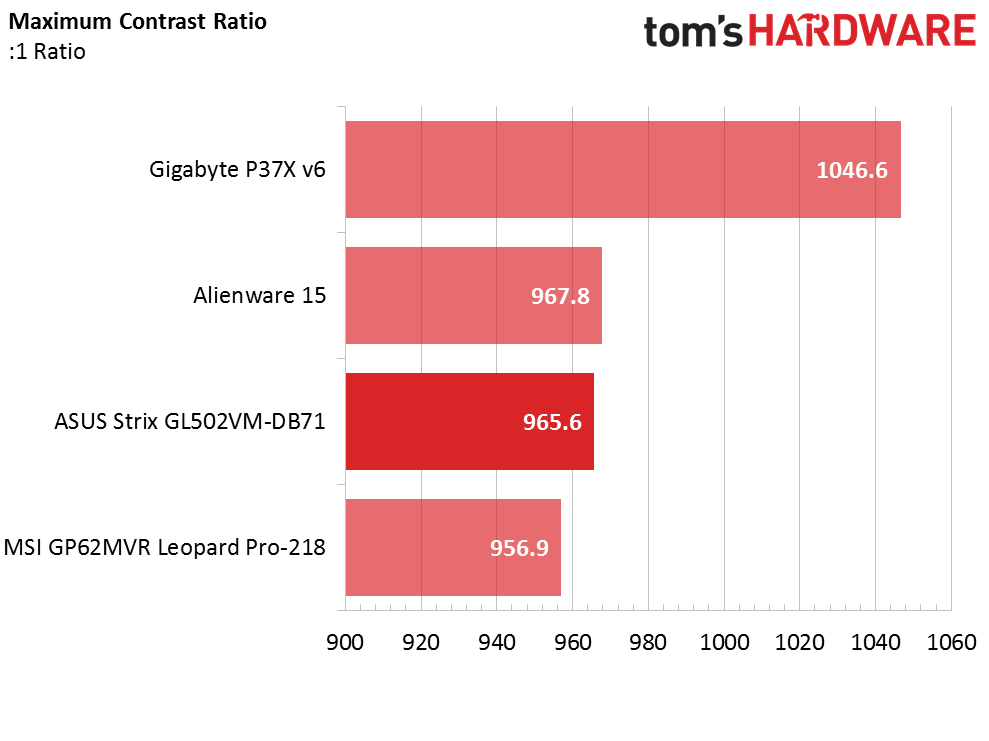
The Strix GL502VM has good contrast ratio at both lowest and highest brightness settings. At 0% brightness the Asus was a bit bright, which is great for white luminance, but not so much for black luminance. At maximum brightness the Asus would have benefited more from a brighter white luminance or lower black luminance, bringing its contrast closer to the P37X v6, which has an excellent display.
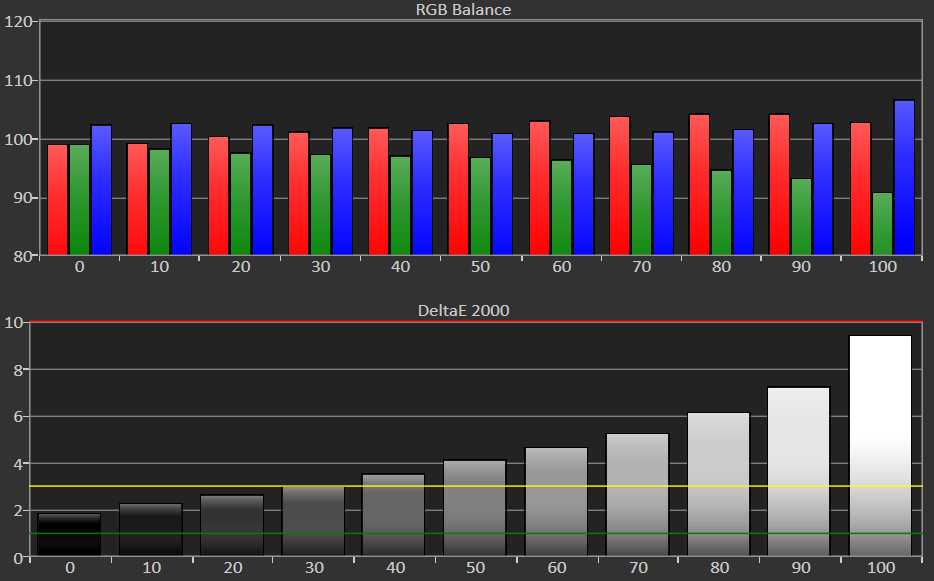

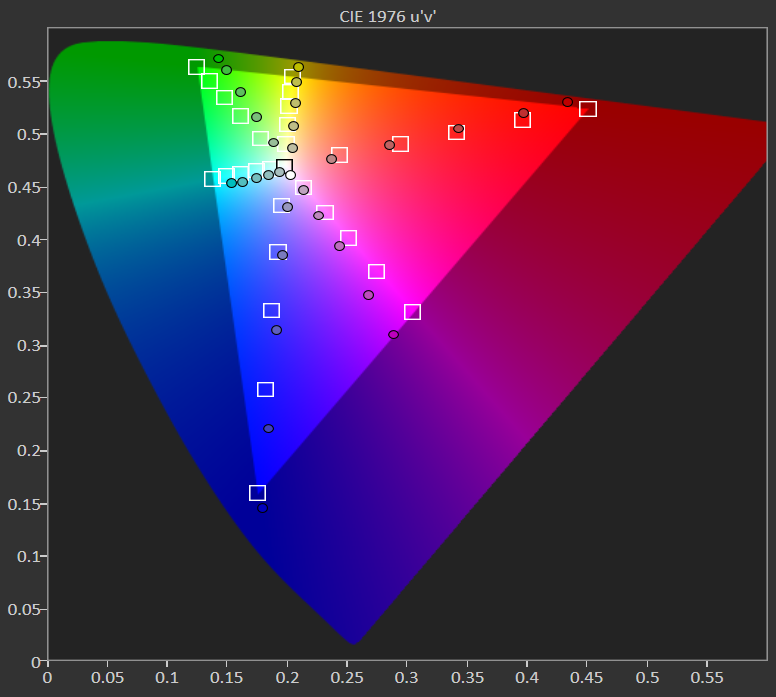


The Asus laptop retains a good color balance at most brightness levels, but lacks a bit in green levels. At higher brightness levels, the green levels drop while red and blue levels rise. Gamma was fairly inconsistent, only hitting 2.2 at 0%, 100%, and around 37% brightness. From 0-37% the gamma is too high, and from 37-100% the gamma is too low.
Get Tom's Hardware's best news and in-depth reviews, straight to your inbox.
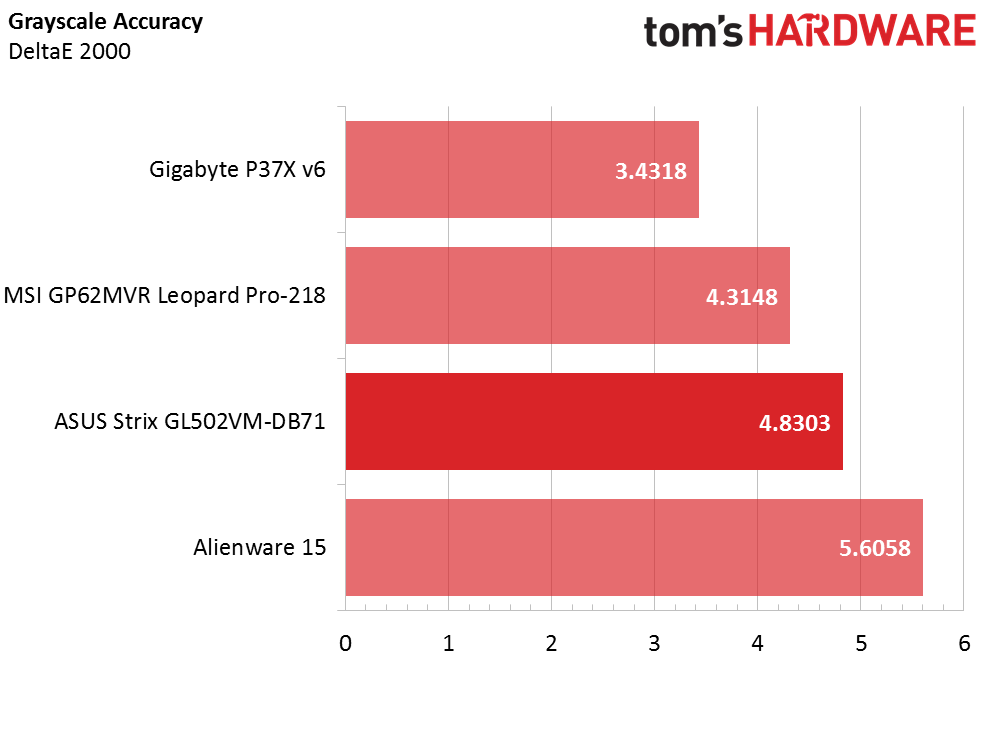
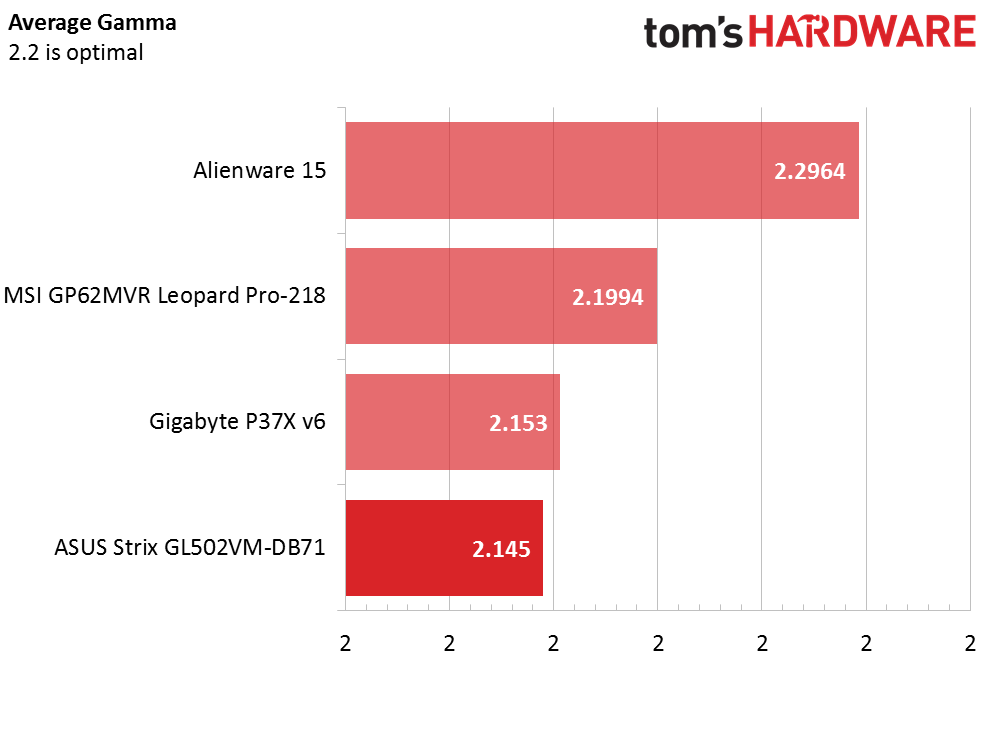
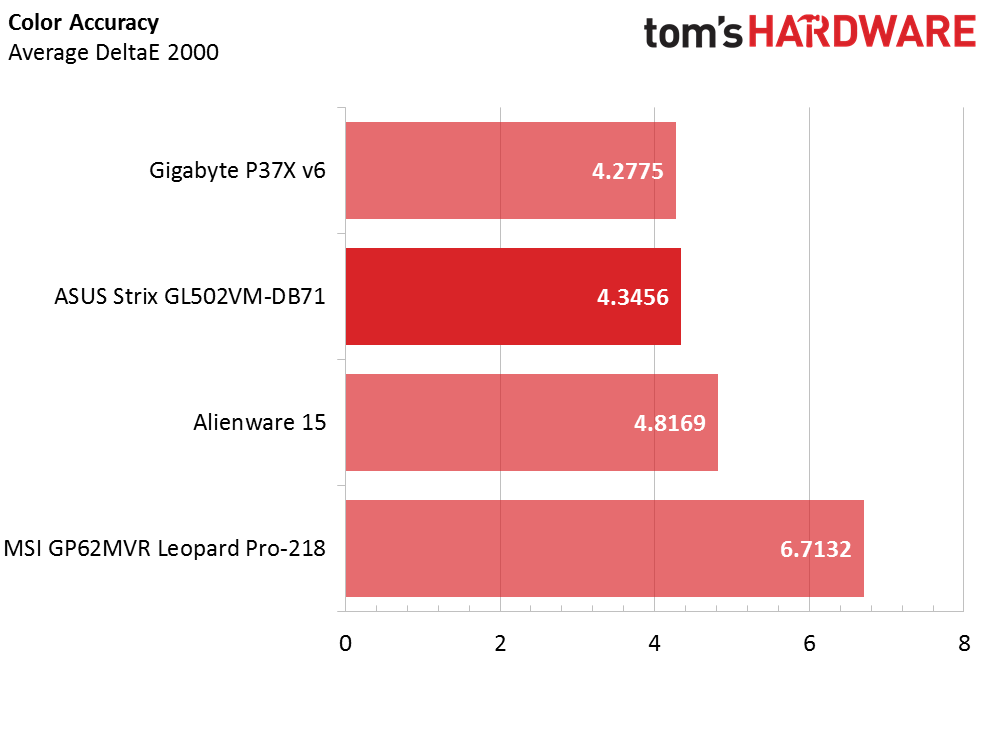
Finally, the 15" Strix's grayscale and average color accuracy differences are too high, enough for the errors to become visible to the naked eye. Our Strix GL502VM's grayscale DeltaE 2000 is particularly high, the second worst out of the four laptops in this comparison set. The average color accuracy isn't as bad as some of its competitors, like the Alienware or Leopard Pro, but it's still outside the acceptable range.
Current page: Battery, Thermal And Display Testing
Prev Page Gaming Benchmarks Next Page Price Analysis And ConclusionDerek Forrest was a contributing freelance writer for Tom's Hardware. He covered hardware news and reviews, focusing on gaming desktops and laptops.
-
ledhead11 Nice review. I also think this might be the best of the bunch in this class(1080p/60hz). As you mentioned a ssd is the only real compromise and that can easily be remedied later. Battery life is fairly impressive for gaming as well. Even more impressive they were able to squeeze g-sync into that price. Bravo!Reply
Any chance of 1440p/144hz reviews coming? I honestly haven't seen many. There seems to be the extremes of affordable 1080p to overpriced 4k(often w/ underpowered gpu's and questionable PPI). -
gaborbarla I have an ASUS laptop and I am still very happy with it after 4 years of use. But, having said this, I would expect a laptop's screen to take up more space on the actual laptop. If the laptop could house a 17 or 18" screen then I think it should. This is why I am so attracted to ultrabooks which hardly leave space for a webcam on the screen panel.Reply -
cats_Paw Its not bad (I mean, a 1060 can even 4K a few titles close to 30 fps), but at the same time the price has gone up along with it...Reply
Cheapest laptop I can find in Poland with a 1070 is around 1900 dollars... -
darcotech Looking for same model but with GTX 1070 and 4K screen. Still no reviews for this one...Reply -
photonboy One concern:Reply
It may be GSYNC, but since there would be no module it works like Freesync. That is perfectly fine if you understand how it all works, however...
The GSYNC range is not mentioned. Unless it drops down to 24FPS (24FPS to 60FPS asynchronous range) you will not get support below the minimum thus you're back to VSYNC ON/OFF issues.
Previously GSYNC laptops avoided this with 75Hz panels and had a range of 30Hz to 75Hz which worked fine, so hopefully they just have panels now that support 24Hz to 60Hz which again will prevent dips below the minimum from suddenly causing added STUTTERING or screen-tear depending on how you've set things up. -
William Henrickson I played Arma3 100 player yesterday and noticed syncing working when it went as low as 16fps, I believe it does frame doubling to compensate.Reply
